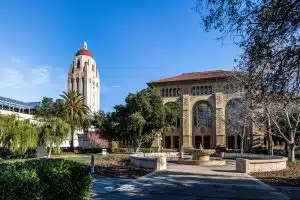The Difference Between Subsidized and Unsubsidized Loans
When it comes to funding your education or investing in large-scale projects, understanding the financial aid options available to you is crucial. Among these options, you may encounter both subsidized and unsubsidized loans. The terminology can seem intimidating at first, but in practice, these loan types are straightforward. Our focus in this article will be to shed light on the key differences between these two loan types and provide insights that will help you make the best financial decision.
Defining Subsidized and Unsubsidized Loans
Though subsidized and unsubsidized loans may appear similar on the surface, they encompass fundamental differences that can significantly affect your financial obligations in the long run.
What is a Subsidized Loan?
A subsidized loan is a type of financial aid where the federal government pays the interest on the loan while the borrower is in school or during other deferment periods. Essentially, this means the loan balance does not increase during times when loan repayments are not required, such as when the borrower is still attending school or during grace periods.
Subsidized loans provide a valuable opportunity for students who may not have the means to pay for their education upfront. By covering the interest, the government aims to alleviate the financial burden on students and promote access to higher education. This type of loan is need-based, meaning that eligibility is determined by the student’s financial need as assessed by the Free Application for Federal Student Aid (FAFSA).
Furthermore, subsidized loans offer borrowers certain advantages. Since the interest is taken care of by the government, students can focus on their studies without the constant worry of accruing interest. This allows them to fully immerse themselves in their academic pursuits and take advantage of the educational opportunities available to them.
What is an Unsubsidized Loan?
On the other hand, an unsubsidized loan is a type of financial assistance where the borrower is responsible for all the interest that accrues on the loan from the time it’s disbursed until it’s paid off. That means even while the borrower is in school, during grace periods, and any deferment or forbearance periods, the interest continues to accrue on the loan.
Unlike subsidized loans, unsubsidized loans are not based on financial need. They are available to both undergraduate and graduate students, regardless of their financial situation. This type of loan can be a valuable resource for students who may not qualify for subsidized loans or need additional funding to cover their educational expenses.
While unsubsidized loans require borrowers to pay the interest throughout the life of the loan, they still offer certain benefits. For instance, these loans provide students with the flexibility to defer interest and principal payments until after graduation. This allows borrowers to focus on their studies without the immediate pressure of repayment, giving them time to establish their careers and financial stability.
It is important to note that even though the interest accrues on unsubsidized loans, students have the option to make interest payments while in school. By doing so, they can minimize the overall cost of the loan and reduce the burden of accumulated interest upon graduation.
Understanding the differences between subsidized and unsubsidized loans is crucial when making decisions about financing your education. By considering your financial needs, eligibility, and long-term financial goals, you can make an informed choice that aligns with your circumstances and sets you on a path toward a successful future.
Key Characteristics of Subsidized Loans
Subsidized loans carry unique features that distinguish them and may make them more attractive to certain borrowers. These loans are designed to provide financial assistance to students who demonstrate a significant need for help in paying for their education. By understanding the key characteristics of subsidized loans, students can make informed decisions about their borrowing options.
One of the key benefits of subsidized loans is the government’s role in covering the interest while the borrower is in school or during deferment. This means that while a student is enrolled at least half-time in an eligible program, the government pays the interest that accrues on the loan. This can be a substantial advantage for borrowers, as it helps to prevent interest from adding up and increasing the overall cost of the loan.
The specific interest rates on subsidized loans may vary annually, but they are typically lower compared to those of unsubsidized loans. This makes subsidized loans a more economical option for students planning on deferring their loan payments while in school. By having the government cover the interest during this period, borrowers can save money and reduce the overall burden of their student loan debt.
Interest Rates and Subsidized Loans
When it comes to interest rates, it’s important to note that subsidized loans offer a fixed interest rate. This means that the interest rate remains the same throughout the life of the loan, providing borrowers with stability and predictability in their repayment plans. Additionally, the interest rates on subsidized loans are typically lower than those of other types of loans, such as credit cards or personal loans.
Another advantage of subsidized loans is that the interest does not accrue while the borrower is in school or during deferment. This means that students can focus on their studies without the added stress of accumulating interest on their loans. By taking advantage of this feature, borrowers can save money and potentially reduce the overall cost of their education.
Eligibility Criteria for Subsidized Loans
Eligibility for subsidized loans is based on financial need, as determined by the federal government. Generally, you must be an undergraduate student and have enough financial need to secure these loans. The college or university, following federal guidelines, determines the actual loan amount which can be awarded.
Financial need is determined by considering various factors, such as the cost of attendance, expected family contribution, and other sources of financial aid. The Free Application for Federal Student Aid (FAFSA) is used to collect this information and assess a student’s eligibility for subsidized loans. It’s important for students to complete the FAFSA accurately and on time to maximize their chances of receiving subsidized loans.
Once a student is determined to be eligible for subsidized loans, the college or university will determine the actual loan amount that can be awarded. This amount is typically based on the student’s financial need and the cost of attendance at the institution. It’s important for students to carefully consider their borrowing needs and only take out the amount necessary to cover their educational expenses.
Overall, subsidized loans offer unique benefits and advantages for students in need of financial assistance. By understanding the key characteristics of these loans, students can make informed decisions about their borrowing options and effectively manage their student loan debt.
The government’s role in covering the interest while the borrower is in school or during deferment, along with the lower interest rates, makes subsidized loans a more affordable choice for many students. Eligibility for subsidized loans is based on financial need, and it’s important for students to accurately complete the FAFSA to maximize their chances of receiving these loans. Overall, subsidized loans play a crucial role in helping students pursue their educational goals without being burdened by excessive debt.
Key Characteristics of Unsubsidized Loans
Unsubsidized loans, while often seen as less advantageous due to interest accruement, actually offer certain advantages and are more accessible to a wider range of students. Let’s dive deeper into the key characteristics of unsubsidized loans.
Interest Rates and Unsubsidized Loans
When it comes to interest rates, unsubsidized loans have some important factors to consider. While the interest rates on these loans remain steady for a given academic year, they typically tend to be higher than those of subsidized loans. This means that students who opt for unsubsidized loans may end up paying more in interest over the life of the loan.
Another crucial aspect to note is that interest on unsubsidized loans starts accruing from the time of disbursement. Unlike subsidized loans where the government covers the interest while the student is in school or during deferment periods, unsubsidized loans require the borrower to pay the interest from the moment the funds are disbursed. This can result in greater loan balances if not managed effectively.
However, it’s important to remember that interest rates can vary depending on the type of unsubsidized loan. For example, undergraduate students may have different interest rates compared to graduate students. It’s always recommended to carefully review the terms and conditions of the loan before making a decision.
Eligibility Criteria for Unsubsidized Loans
Unlike subsidized loans that are based on financial need, unsubsidized loans are available to a broader range of students. This means that even if you don’t meet the criteria for subsidized loans, you may still be eligible for unsubsidized loans.
Unsubsidized loans are open to both undergraduate and graduate students, making them a viable option for those pursuing higher education at any level. The school determines the loan amount based on other aid received and the cost of attendance. This means that the loan amount you can receive through an unsubsidized loan will depend on factors such as scholarships, grants, and the overall cost of attending the educational institution.
One advantage of unsubsidized loans is that they provide students with more flexibility. Since financial need is not a requirement, students who may not qualify for subsidized loans can still access funds through unsubsidized loans to help cover their educational expenses.
It’s important to note that while unsubsidized loans may be more accessible, it’s crucial to carefully consider the long-term financial implications. Understanding the interest rates, repayment terms, and the overall cost of borrowing is essential in making an informed decision about the type of loan that best suits your needs.
Comparing Subsidized and Unsubsidized Loans
When it comes to financing your education, understanding the differences between subsidized and unsubsidized loans is crucial. These loan types can play a significant role in helping you achieve your educational and financial objectives. Let’s take a closer look at the similarities and differences between these two options.
Similarities Between Subsidized and Unsubsidized Loans
Both subsidized and unsubsidized loans offer certain benefits that can ease the financial burden of pursuing higher education. Firstly, both loan types can be used to cover various expenses, including tuition fees, textbooks, room and board, and other school-related costs. This flexibility allows students to have the necessary funds to support their academic journey.
Additionally, both subsidized and unsubsidized loans have loan fees associated with them. These fees are typically a small percentage of the total loan amount and are factored into the repayment plan. It’s important to consider these fees when evaluating the overall cost of borrowing.
Furthermore, both loan types have set limits on the amount you can borrow. These limits are determined by factors such as your year in school, dependency status, and the cost of attendance at your chosen institution. Understanding these limits can help you plan your finances accordingly and ensure you borrow an amount that aligns with your needs.
Differences Between Subsidized and Unsubsidized Loans
While subsidized and unsubsidized loans share some similarities, there are key differences that can impact your financial obligations and eligibility.
One significant difference is how interest is handled. With subsidized loans, the government covers the interest that accrues during specific periods, such as while you are enrolled in school at least half-time, during deferment periods, and during the grace period after graduation. This means that the interest on subsidized loans does not start accumulating until you enter the repayment phase. On the other hand, with unsubsidized loans, the borrower is responsible for all the interest that accrues from the moment the loan is disbursed. This can result in a higher overall loan cost over time.
Another important distinction lies in the eligibility requirements. Subsidized loans are awarded based on financial need, as determined by the information provided on the Free Application for Federal Student Aid (FAFSA). This means that students from lower-income families may qualify for subsidized loans, which can be a significant advantage as the government helps cover the interest. In contrast, unsubsidized loans do not have a financial need requisite, making them available to a wider range of students regardless of their financial situation.
Understanding the differences between subsidized and unsubsidized loans can help you make an informed decision about which option is best suited for your individual circumstances. It’s important to carefully consider your financial needs, repayment plans, and long-term goals when choosing a loan type. By doing so, you can ensure that you are making a sound financial investment in your education and future.
Making the Right Loan Choice
Choosing the right loan for your situation depends on a variety of personal and financial factors.
Factors to Consider When Choosing a Loan
While deciding on what type of loan to apply for, consider your financial need, the cost of attendance, interest rates, and your ability to repay the loan over time. Consider possible changes in your financial condition in the foreseeable future. For instance, will you have a steady income source to afford the regular loan repayments after graduation?
Impact of Loan Type on Repayment and Debt
The type of loan you choose will inevitably affect your debt level and repayment schedule. Subsidized loans can result in a lower total debt due to the government paying the interest at certain times. However, they often have stricter eligibility criteria. Unsubsidized loans, though the balance can increase due to the accruing interest, might give more flexibility in terms of loan amount and eligibility criteria.
By understanding the differences between subsidized and unsubsidized loans, you can better evaluate your options and make informed decisions that support your financial goals.
How AdmissionSight Can Help You with College Admissions
AdmissionSight is a college consulting firm that provides personalized assistance to students throughout the college admissions process. Here are some ways that AdmissionSight can help you:
Admissions strategy: AdmissionSight can help you develop a strategic plan for your college application process. Our professional consultants can assist with identifying schools that are a good fit for your academic, extracurricular, and personal goals and help you plan and prioritize your application strategy.
Application review: AdmissionSight can review your application and provide feedback on how to improve it. We can offer suggestions on making your application stand out and highlighting your strengths and unique qualities.
Essay coaching: AdmissionSight can help you craft compelling essays that showcase your personality, goals, and achievements. We can guide you through the essay writing process and provide feedback on your drafts to help you refine your writing.
Interview preparation: AdmissionSight can provide interview coaching to help you feel confident and prepared for college interviews. Our experts can offer tips on how to present yourself professionally and how to answer common interview questions.
Extracurricular planning: AdmissionSight can help you plan and develop your extracurricular activities to make them more impactful and meaningful. We can suggest activities that align with your interests and goals and provide guidance on demonstrating your leadership and initiative.
Overall, AdmissionSight can provide valuable guidance and support throughout the college admissions process to help you maximize your chances of getting accepted into the college of your choice.
With a high success rate of over 75%, we have built a strong network in the past decade. Book an initial consultation today, free of charge!









































